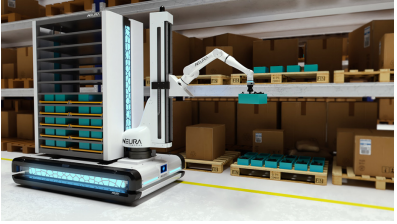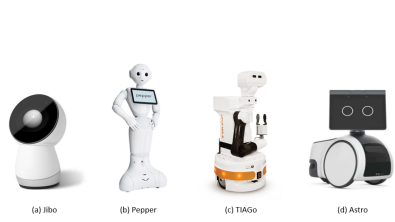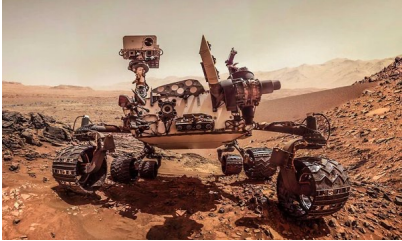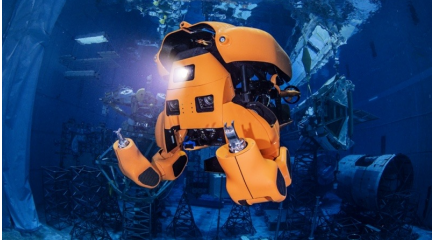Module 7: Mobile Robots
1/84
There's no tags or description
Looks like no tags are added yet.
Name | Mastery | Learn | Test | Matching | Spaced |
|---|
No study sessions yet.
85 Terms
Mobile Robots
are automated machines capable of movement in different environments.
Mobile Robots
can navigate various terrains and perform diverse tasks, ranging from simple material handling to complex search and rescue operations.
Wheeled Robots
Most common type, known for stability and energy efficiency
Wheeled Robots or Legged Robots
Used in manufacturing, transportation, and domestic settings
Legged Robots
Mimic animal locomotion, allowing navigation in rough or uneven terrain
Aerial Robots (Drones)
Fly through the air, used for surveillance, aerial photography, and in agriculture for crop monitoring
Aquatic Robots
Operate underwater, used in marine research, underwater exploration, and in environmental monitoring
Shakey the Robot
The First Electronic Person
Shakey the Robot
was the first mobile robot able to perceive and reason about its surroundings.
Shakey the Robot
This early robot became an archetype from which subsequent robots were built and significantly influenced modern robotics and AI techniques
Shakey
obtained its name from the way it could shake when it came to an abrupt stop. This was after a month of its creators trying to find a suitable name for the machine
Stanford Cart
initially created to study driving a vehicle on the Moon remotely from Earth
Stanford Cart
it was reconfigured at the Stanford Artificial Intelligence Laboratory to experiment with the idea of self-driving vehicles
Spirit and Opportunity
names of the Adventure Twins
90, Opportunity, 15, Mars, odometer
Both rovers lived well beyond their planned __-day missions. _____ worked nearly __ years on ____ and broke the driving record for putting the most miles on the _____ (an instrument for measuring the distance traveled by a vehicle)
Autonomous Decision-Making
AI and ML have enabled mobile robots to make independent decisions based on data analysis and learning from past experiences. This autonomy is crucial in unstructured environments where predefined rules are insufficient.
Advanced Perception and Recognition
Integration of ML algorithms allows robots to interpret complex sensory data, recognize patterns, and even understand human behavior to a certain extent. This capability is vital for tasks like navigation, obstacle detection, and interaction with humans and other robots
Enhanced Sensory Perception
The evolution of sensor technology, including LIDAR, ultrasonic, infrared, and tactile sensors, has dramatically improved a robot's ability to perceive its environment. High-resolution sensors provide detailed environmental data, enabling more precise navigation and interaction.
Sensor Fusion
Combining data from multiple types of sensors (sensor fusion) has allowed for more accurate and reliable perception. This synergy helps in creating a comprehensive understanding of the surroundings, essential for complex tasks like SLAM (Simultaneous Localization and Mapping).
Improved Path Planning and Navigation
Advancements in robotics software have led to more efficient and intelligent path planning algorithms. These algorithms enable mobile robots to navigate efficiently, even in dynamic or unpredictable environments.
Machine Vision
Progress in computer vision has allowed robots to not only capture visual data but also to process and interpret it in meaningful ways. This is crucial for tasks that require recognition of objects, symbols, or even gestures.
Connected Robotics
The integration with IoT (Internet of Things) enables mobile robots to communicate and collaborate with other devices and systems, enhancing their functionality and scope of applications.
Cloud Robotics
Leveraging cloud computing allows for powerful data processing and storage capabilities. It enables robots to access vast amounts of data and computational power, facilitating more complex tasks and learning processes.
Lightweight and Durable Materials
The use of advanced materials has led to the development of lighter, more durable robots that can operate for longer periods and in harsh environments
Modular and Flexible Design
Innovations in design have led to modular and adaptable robots that can be customized for specific tasks or environments, increasing their utility and efficiency
Sensors
Robots use _____ to understand and navigate their environment
Sensors
This includes cameras, LIDAR, ultrasonic sensors, and infrared sensors.
Actuators
are the 'muscles' of robots. They convert energy into motion, enabling the robot to move, lift, or manipulate objects.
motors and hydraulic or pneumatic systems
Common types of actuators include
Controllers
The 'brain' of the robot. Controllers process data received from sensors and send commands to the actuators.
Controllers
They are typically comprised of microprocessors or computers running sophisticated software algorithms.
Locomotion
refers to the various ways robots move and adapt to different surfaces or terrains.
Wheels and Track
A locomotion method common in industrial and domestic robots for stable and energy-efficient movement
Legs
A locomotion method that provide versatility in uneven terrains, mimicking animal or human movement. Used in exploratory or rescue robots.
Propellers (in Aerial Robots)
A locomotion method that allows flight by generating lift, used in drones for tasks ranging from aerial photography to delivery services
GPS technology
_____ is predominantly used for outdoor navigation.
GPS technology
It provides robots with precise geolocation information, which is essential for tasks like route planning, surveying, and long-distance travel.
GPS
By receiving signals from a network of satellites, ___ enables robots to determine their exact location on Earth.
GPS
is less effective indoors or in areas where satellite signals are obstructed, like dense urban environments or underground.
SLAM technology
_____ allows robots to create a map of an unknown environment while simultaneously tracking their own location within that map. This is particularly important for indoor navigation where GPS signals are not reliable.
SLAM
_____ typically involves the integration of various sensors such as cameras, LIDAR, and inertial measurement units.
Simultaneous Localization and Mapping (SLAM)
Application: Robotic Vacuum Cleaners
Path planning, most
_____ involves calculating the least/most efficient route from one point to another. This process takes into account the robot's physical dimensions, movement capabilities, and the characteristics of the environment.
Obstacle detection and avoidance
One of the primary concerns in path planning is _____ and _____
sensor data
Robots use ___ ___ to identify potential obstacles and alter their path accordingly.
shortest distance, least energy consumption, safety, and speed
Optimization Factors: These algorithms optimize for various factors like shortest/longest _____, least/most ____ _____, ____, and ____.
Sensing
It involves the use of various sensors to gather data about the robot's surroundings, which is essential for safe and effective operation.
Light Detection and Ranging (LIDAR) Sensors
use laser light to measure distances. They emit laser beams and measure the time taken for the light to return after hitting an object, allowing for precise distance calculations.
Cameras
capture visual data, providing an essential input for processing and interpreting the environment. This includes color, texture, shape, and movement.
Ultrasonic Sensors
use high-frequency sound waves to detect objects and measure distances.
Ultrasonic Sensors, sound pulses, time, echo
_____ ____ emit ___ ____ and measure the ____ it takes for the ____ to return.
Infrared sensors
detect infrared light emitted from objects in their vicinity.
Infrared Sensors, heat, movement, warmth, motion
____ are capable of sensing ___and ____, making them useful in various applications. Their ability to detect ____ and ____ makes them suitable for security applications, like intruder detection, and for environmental monitoring, such as detecting changes in temperature or the presence of living beings.
Perception
a digital construct or model of the real world as interpreted by the robot's sensors and algorithms which includes not just static features like walls or furniture but also dynamic elements like moving people, animals, or other robots.
Construction Robots, Industrial Robots, Medical Robots, Domestic Robots, Space Exploration Robots, Underwater Robots
6 Applications of Mobile Robots
Construction Robots
Applications of Mobile Robots

Industrial Robots
Applications of Mobile Robots

Medical Robots
Applications of Mobile Robots

Domestic Robots
Applications of Mobile Robots

Space Exploration Robots
Applications of Mobile Robots

Underwater Robots
Applications of Mobile Robots

Autonomy
Challenges
Improving decision-making capabilities for complex, unstructured environments
Battery Life and Power Efficiency
Challenges
Extending operational time and finding sustainable power solutions.
Cost and Accessibility
Challenges
Making advanced robotics more affordable and accessible to a wider range of users and industries.
Safety and Reliability
Challenges
Ensuring robots can operate safely alongside humans in diverse settings
AI and ML Integration
Emerging Trends and Future Directions
Advancing AI algorithms for better perception, decision-making, and adaptability.
Human-Robot Interaction (HRI)
Emerging Trends and Future Directions
Enhancing interfaces and communication methods for seamless collaboration between humans and robots.
Swarm Robotics
Emerging and Future Directions
Developing coordinated systems where multiple robots operate together to achieve complex tasks.
Soft Robotics
Emerging Trends and Future Directions
Creating robots with flexible materials that can safely interact with humans and delicate environments.
Haptics
The ability of the robot to feel
100
By paper, we can design robots up to ___ number of wheels for engineering applications.
Mars Rover and Spot Mini
2 examples of wheeled robots
Cheetah Robot
Example of Legged Robot made by MIT
Centauro
A hybrid (Leg and wheel) robot
Fish Eye Bounding Box
used as a representation specifically designed for Fish Eye cameras. Used to identify the kind of fish that is seen underwater.
Stanford cart
One of the earliest examples of robots that is capable of autonomous navigation.
Autonomous, Mobile Robotics, Human-Robot Interaction, Drone Navigation
Applications of Sensor Fusion
VEX Robotics
a robotics program for middle schoolers that is based on the United States
Sensors
____ performs Data Collection
Controllers
____ are responsible for any Data Processing and Decision-Making
Actuators
____ performs Action Implementation
Trilateration
GPS uses concept called Trilateration/Triangulation that determines the position using geometric properties of skills
Global Positioning System (GPS), Simultaneous Localization and Mapping (SLAM)
____ is best used for Outdoor Navigation
____ is usually used for Indoor Settings
Live Detection and Ranging, Mall Map, floors, ceilings, light
SLAM typically uses ___.
Example: ___.
Limitations:
1. cannot see ___ and ___.
2. ____reflections.
Cost Function
Objective of Path Planning Algorithms:
To minimize the ___ ____ (may also be defined in relation to obstacle distance and solved for the
minima for obstacle avoidance)